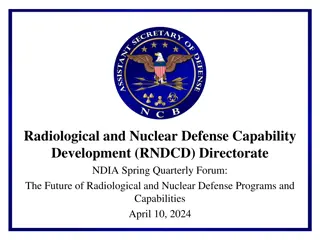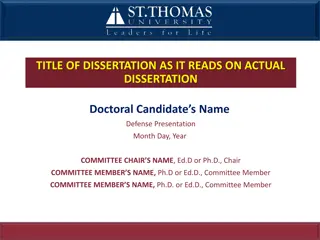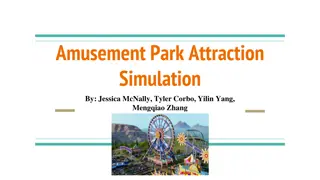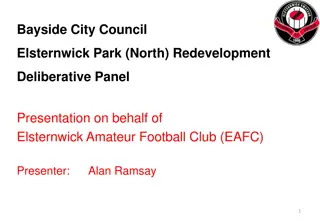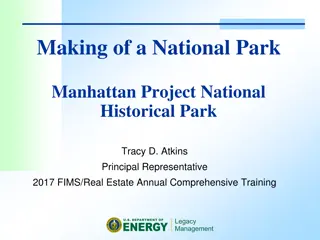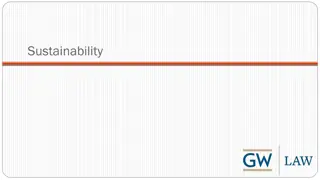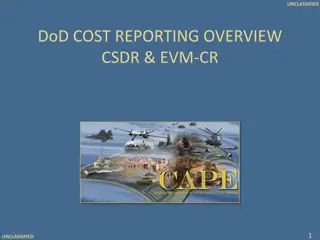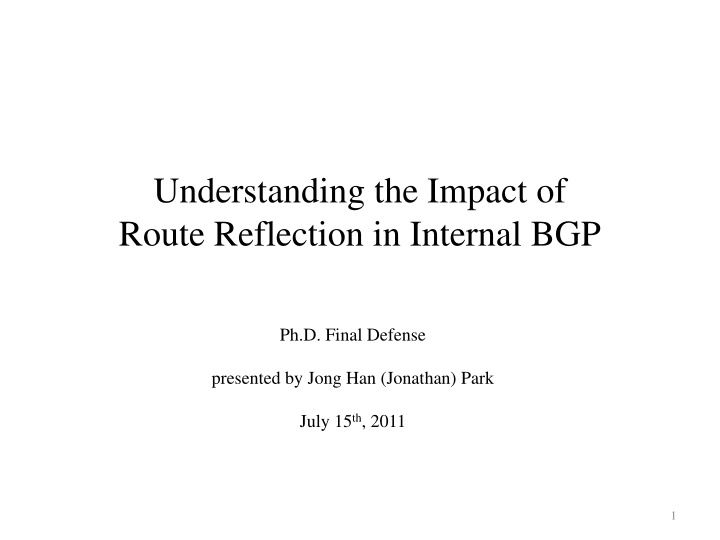
Understanding the Impact of Route Reflection in Internal BGP
Explore the significance of route reflection in Internal BGP through comprehensive research and analysis, shedding light on its performance, protocol enhancements, and implications for future routing protocols. Discover insights on BGP path diversity, convergence in large ISPs, and the challenges of full-mesh i-BGP scalability.
Download Presentation

Please find below an Image/Link to download the presentation.
The content on the website is provided AS IS for your information and personal use only. It may not be sold, licensed, or shared on other websites without obtaining consent from the author. If you encounter any issues during the download, it is possible that the publisher has removed the file from their server.
You are allowed to download the files provided on this website for personal or commercial use, subject to the condition that they are used lawfully. All files are the property of their respective owners.
The content on the website is provided AS IS for your information and personal use only. It may not be sold, licensed, or shared on other websites without obtaining consent from the author.
E N D
Presentation Transcript
Understanding the Impact of Route Reflection in Internal BGP Ph.D. Final Defense presented by Jong Han (Jonathan) Park July 15th, 2011 1
Research Overview Internal Border Gateway Protocol and Route Reflection Understanding the Impact of BGP Route Reflection - Understanding BGP Next-hop Diversity (2nd author, Global Internet Symposium 2011) - A Comparative Study of Architectural Impact on Next-hop Diversity (under submission to IMC 11) - Quantifying i-BGP Convergence inside large ISPs (under submission to IMC 11) BGP Route Reflection Protocol Diagnosis - Investigating Occurrence of Duplicate Updates in BGP Announcements (PAM 10, Best Paper) Others (listed as 2nd author) on BGP Performance - Route Flap Damping with Assured Reachability (AINTEC 10) - Explaining Slow BGP Table Transfers: Implementing a TCP Delay Analyzer (under submission to IMC 11) 2
Motivation Route reflection was added to the routing architecture to fix a few critical problems Despite the wide adoption of RR, a systematic evaluation and analysis on the impact of route reflection is missing, which can be helpful in: Understanding of the protocol performance and enhancements More realistic simulations Designing the future routing protocols This work is to fill in the void 3
Outline Introduction to Internal BGP and Route Reflection Understanding BGP Path Diversity and the Impact of Route Reflection Understanding BGP Convergence inside Large ISPs 4
Introduction to full-mesh i-BGP AS3 AS4 AS1 e-BGP i-BGP AS2 This router is no longer needed. Remove! Total number of i-BGP routers in AS1 = 4 = N Total number of sessions = N(N-1)/2 Number of additional sessions for an additional i-BGP router = N 5
Full-mesh i-BGP does not scale City 1 City 2 City 3 Large ISPs have hundreds or even more than a thousand routers internally Full mesh leads to a high cost in provisioning Adding or removing a router requires reconfigurations of all other routers 6
Addressing the scalability problem of full-mesh i-BGP Two solutions are suggested in 1996 AS confederations (RFC 1965) Route reflection (RFC 1966) This work focuses on route reflection Dominant solution Main concerns shared with AS confederation Path diversity reduction Convergence delay 7
Route reflection solves scalability problem client 2 client 1 route reflector AS1 client 4 client 3 AS2 e-BGP i-BGP Total number of i-BGP routers = 5 = N Total number of sessions = 4 Number of additional sessions for an additional i-BGP router = 1 8
Large ISP revisited with hierarchical RR Route reflection substantially reduces the total number of sessions Route reflection can be deployed hierarchically to reduce even more 9
Negative Impact of BGP route reflection Negative side effects Routing performance Path diversity [Uhlig, Networking 06] Convergence Others Robustness to failures Internal update explosion [McPherson,APNIC talk, 2009] Optimal route selection [Vutukuru, Infocom 06] Routing correctness Data forwarding loop [Griffin, Sigcomm 02] Route oscillations [McPherson, Internet Draft, 2000] 10
Outline Introduction to Internal BGP and Route Reflection Understanding BGP Path Diversity and the Impact of Route Reflection Understanding BGP Convergence inside Large ISPs 11
Definitions Next-hop POP and AS Next-hop Point-of-Presence (i.e., city in which the next-hop router is located) and AS that the ISP uses to reach a given external destination BGP Next-hop Diversity Number of distinct next-hops to reach a given external destination as used simultaneously inside a given ISP 12
Why do we care about path diversity? Higher path diversity More flexibility in traffic engineering and load balancing Higher availability Current IETF efforts to increase BGP diversity Diverse-path, Add-path, and External-best 13
Path diversity reduction due to route reflection RTR2 AS1 RTR1 RR AS2, p RTR3 RTR4 p: NH = RTR1, ASPATH = AS2 p: NH = RTR4, ASPATH = AS2 RTR1, RR p: NH = RTR1, ASPATH = AS2 p: NH = RTR4, ASPATH = AS2 ALL OTHERS p: NH = RTR4, ASPATH = AS2 14
Main questions to answer What degree of BGP next-hop diversity do existing ISPs have now? Does route reflection deployment reduce BGP next-hop diversity? 15
Data collection settings ISPFM ISPRR backbone sub-AS Collector i-BGP full-mesh AS11 AS1 Collector ASii AS22 AS2 ASi Sub AS Sub AS Sub AS Node type: BGP router 1st level reflector 2nd level reflector 3rd level reflector Session type: e-BGP peer i-BGP peer confederation BGP i-BGP reflector to client ISPFM: Tier-1 ISP with full-mesh i-BGP backbone routing infrastructure ISPRR: Tier-1 ISP with route reflection i-BGP backbone routing infrastructure 16
BGP next-hop diversity of the 2 ISPs ISPFM ISPRR Common observations A small number of prefixes with a very high degree of next-hop diversity Prefixes with very low degree (diversity=1) of next-hop diversity A few large groups of prefixes with the same moderate degree of next-hop diversity A significant number of prefixes (more than 90% and 65% respectively) have multiple next-hop POPs and ASes Overall, ISPRR has relatively lower next-hop diversity, compared to ISPFM 17
Inferring external connectivity AS3 R2 AS1 R3 AS2, p R1 R4 In the absence of failures, the reachability through R2 is not visible If the current best path fails, the path through R2 will be explored 18
Inferred external connectivity vs. next-hop POPs ISPRR (during 1st week of June 2010) ISPFM (during 1st week of June 2010) The external connectivity is not the main reason for the difference 19
Paths can be hidden due to path preference 7 BGP path attribute values used by a BGP router in BGP best path selection First 4 are independent from the i-BGP topological location of the given router LOCAL_PREF AS_PATH length ORIGIN MED The rest 3 attribute values change depending on the i-BGP topological location of the given router Prefer e-BGP over i-BGP IGP cost Router ID 20
Diversity reduction by the first 4 BGP path attributes ISPRR (during 1st week of June 2010) ISPFM (during 1st week of June 2010) The first 2 criteria of BGP path selection hides the majority of the path diversity About 16% and 10% reduction for ISPFM and 34% and 7.6% reduction for ISPRR by (1) LOCAL_PREF and (2) AS_PATH length respectively 21
Summary The overall next-hop diversity varies widely, depending on the topological location of origin AS for a given prefix The difference in the overall next-hop diversity is due to i-BGP topology-independent factors More specifically, the first 2 BGP best selection criteria hides up to 42% Next-hop diversity reduction by ISPRR s hierarchical RR is less than 3.3% Main reason. significant reduction by the i-BGP topology-independent factors already 22
Outline Introduction to internal BGP and Route Reflection Understanding BGP Path Diversity and the Impact of Route Reflection Understanding BGP Convergence inside Large ISPs 23
Definitions Event Change in routing information to reach a given external prefix Monitor Router from which i-BGP data is collected within a given ISP i-BGP convergence Convergence of all monitors inside a given ISP for a given event 24
Why do we care about i-BGP convergence? BGP suffers from slow convergence May cause severe performance problems in data delivery [TON 01, Labovitz] [Infocom 01,Labovitz] [IMC 03,Mao] [Sigcomm 06,Wang] at inter-AS level Virtually no measurement studies exist on BGP convergence inside an ISP 25
Increased convergence delay in i-BGP RR Update path AS1 RR2 RTR 4 RR1 RTR 3 1.RR2->RTR1 2.RR1->RTR1 3.RR2->RR1->RTR1 4.RR1->RR2->RTR1 5.Not reachable RTR 2 RTR 1 There is no path to prefix p! 1. Delay due to hierarchy - additional path distance - additional processing delays 2. Delay due to route reflector redundancy - increased # of control paths AS2, p 26
Main questions to answer What does i-BGP convergence look like? What is the impact of route reflection convergence delay? 27
Data collection settings ISPFM ISPRR backbone sub-AS Collector i-BGP full-mesh AS11 AS1 Collector ASii AS22 AS2 ASi Sub AS Sub AS Sub AS Node type: BGP router 1st level reflector 2nd level reflector 3rd level reflector Session type: e-BGP peer i-BGP peer confederation BGP i-BGP reflector to client ISPFM: the collector is a member of the i-BGP full-mesh ISPRR: the collector is a client of the 2nd level route reflectors 28
Inferring best path selection for peers in i-BGP full-mesh Path2 to prefix p RTR2 AS1 SelectBestPath(Path1,Path2) Which path does RTR3 use? 1. 2. 3. 4. 5. 6. 7. LOCAL_PREF AS_PATH length ORIGIN MED E-BGP over I-BGP IGP cost to the path Router ID (tie breaker) RTR3 Collector RTR1 Path1 to prefix p Q: Best path used by RTR3 to reach prefix p? A: Use geographical information of the routers to approximate IGP cost in the BGP best path selection 29
High-level view of quantifying i-BGP convergence T = 60 seconds monitor1 collector Event Identification (update clustering) monitorn event e event e T Event Classification (Determine Type & Scale) S METRICS 1. Duration(e) 2. NumUpdates(e) 3. NumPaths(e) path preference 30
Event identification: time-based update clustering Example of update arrivals for a given beacon prefix Time 7200 seconds X = 60 seconds Fraction of updates (CCDF) ISPFM 7200 seconds Inter-arrival times of beacon prefix updates during June 2010 (seconds) 31
Event classification: adding type information p0 pn p1 Time [IMC 06 Oliveira] Updates generated from a monitor in an event The last update from the previous event EventM p0 = pn p0 != pn p0= = pn Path Disturbance Path Change Same Path Idown Iup Ilong Ishort Iequal Ispath Idist ISPFM 8.9% 3.0% 3.1% 35.8% 40.1% 0.3% 8.8% ISPRR 15.7% 4.9% 4.6% 29.7% 31.9% 0% 13.2% 32
Event classification: adding scale information Event Scale Se = (# of POPs observed the event) / (total # of monitored POPs) Event Scale Types Local Event: only one POP inside the ISP observes the event AS-wide Event: all POPs inside the ISP observe the event Others: non-local or non-AS-wide events 33
Identified events from ISPRR and ISPFM Number of Identified Events per Month Scale of Events During June 2010 The total number of events gradually increases as it fluctuates Most of events are either local or AS-wide in their scale Local events are observed in all POPs 34
Event characteristics ISPRR ISPFM Local Events AS-wide Events The majority of local events converge within 1 second 97% and 72% for ISPRR and ISPFM respectively Difference due to the different delays of the neighboring ASes AS-wide event duration differs between the two ISPs Due to the delayed updates via different paths 35
How Much Delay Does Route Reflection Add to the Overall i-BGP Convergence? 36
Case studies in ISPRR: estimating the additional delay caused by route reflection Additional delays due to route reflector redundancy Identify the superfluous updates generated purely due to route reflector redundancy What is the additional convergence time solely contributed by these updates? Additional delays due to hierarchy Compare the direct and RR paths between all monitors in the backbone routing infrastructure inside ISPRR 37
Superfluous update example ISPRR 1. 2. How many superfluous updates? What is the additional delay caused by these updates? BR1 BR2 38
Superfluous updates due to route reflector redundancy and its Impact on convergence The amount of superfluous updates is not significant in most cases Convergence duration: 0.3%, 0.2%, 0.4% and 5.3% for Iup, Ishort, Ilong and Idown increase Number of updates: 3%, 4%, 13%, and 40% increase for Iup, Ishort, Ilong, and Idown increase 39
Is there routing plane path stretch in the top 2-levels of route reflection inside ISPRR? A B DistanceDirect(AA,BB) = where ri is a router in the order detected by traceroute DistanceRR(AA,BB) = BB AA DistanceDirect(AA,B) + DistanceDirect(B,BB) Measure the physical path length and latency for RR paths using traceroute and ping Repeat the measurement for direct paths and compare with RR paths 40
Path distance and latency of direct and RR paths In case of ISPRR, RR paths are shorter with less latency i.e., the RRs are aligned well with the shortest physical paths 41
Summary Defined, quantified, and analyzed i-BGP convergence i-BGP routing events mostly are local or AS-wide in their scale Local events: mostly lasts less than 1 second AS-wide events: the duration is longer and mostly depends on external factors Our case study of ISPRR shows RR does increase the number of updates and convergence duration However, the amount is not significant Additional 0.3%, 0.2%, 0.4%, and 5.3% increase in the duration of Iup, Ishort, Ilong, and Idown RR topology design can mitigate the additional delays 42
Thank you. 43
Paths can be hidden due to path preference AS3 R2 AS1 R3 AS2, p R1 R4 In BGP, a less preferred path is not announced by the border routers In this example, external connectivity: 3 POPs, next-hop diversity: 2 POPs 45
Topology-independent diversity reduction in ISPFM LOCAL_PREF and AS_PATH length are the two main impacting attributes that hide paths About 16% and 10% respectively 46
Topology-independent diversity reduction in ISPRR Significant reduction mostly due to the LOCAL_PREF value About 34% and 7.6% by LOCAL_PREF and AS_PATH length respectively 47
Event characteristics ISPRR ISPFM Local Events AS-wide Events The majority of local events converge within 1 second 97% and 72% for ISPRR and ISPFM respectively i-BGP convergence duration differs between the two ISPs Due to the difference in connectivity and delayed updates via different paths 48
Update reduction in full-mesh i-BGP Setting Observation Higher MRAI timer leads to update reduction, and the update reduction is not significant Data: NTT i-BGP data from 20100601 Apply different MRAI timers to the monitor-collector session and calculate the reduction for beacon prefixes 49
Increased convergence time in full-mesh i-BGP Setting Observation The increased convergence time is proportional to the MRAI timer used Data: NTT i-BGP data from 20100601 Apply different MRAI timers to the monitor-collector session and calculate the convergence duration for beacon prefixes 50


